Caring for the Caregivers: 2018 MDes Thesis Talks
How can doctors, nurses, and medical staff improve communication with and support of patient family members — and how does this impact patient outcomes? What guiding principles should inform design when it's for something as significant as end of life care?
Students from the second graduating class of the Stamps Master of Design in Integrative Design (MDes) program addressed these big questions while raising many others during an evening entitled “Caring for the Caregivers,” featuring a pair of public talks held in the Stamps Gallery on March 23, 2018.
The talks followed two different, two-year projects by students to design interventions that help families and loved ones navigate the complexities of healthcare systems.
Working in collaboration with Michigan Medicine's Patient & Family Centered Care (PFCC) division, graduate students Scott Dailey, Prerna Dudani, and Priyanka Raju Dantuluri (MDes '18) developed, designed, and piloted a resource book for patients and caregivers to help make them aware of services available to them through PFCC.
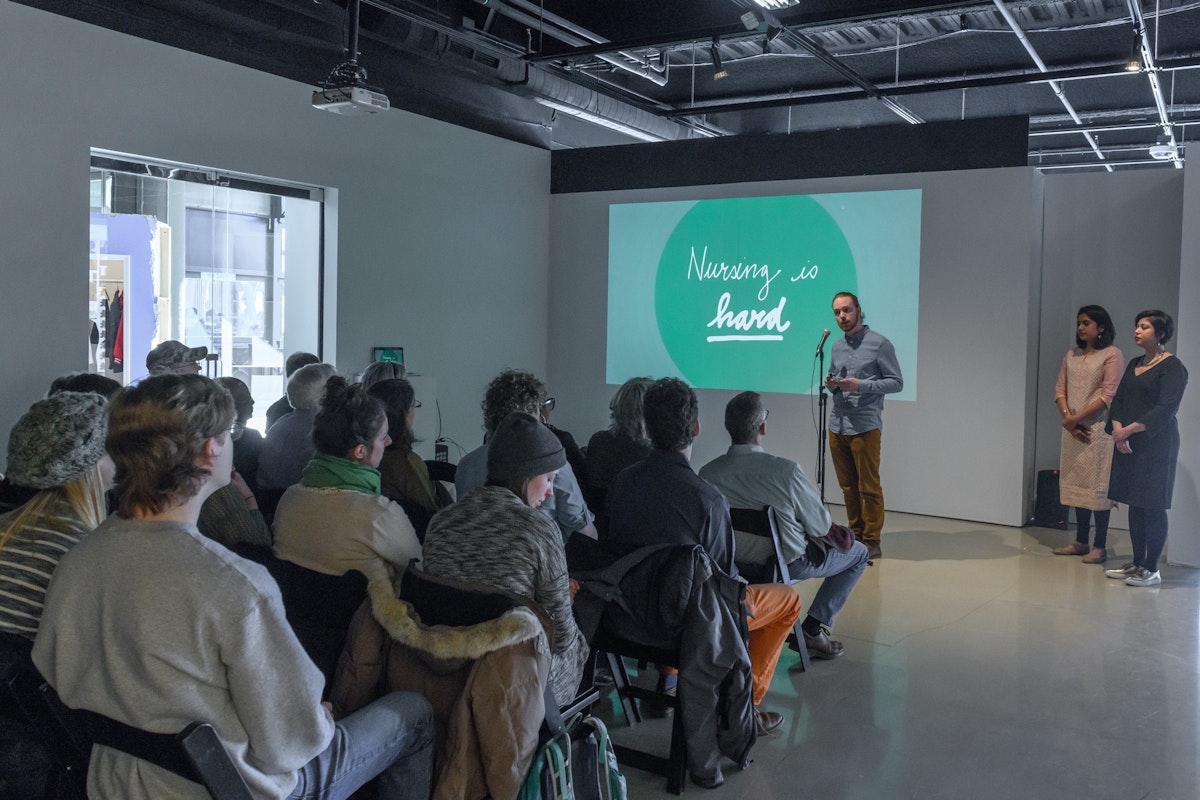
Through qualitative research with caregivers, the group heard a recurring sentiment: “I don't know what I don't know.” In response, the students set out to help caregivers navigate their new situation and environment.
"Caregiving is hard," Dudani said. "It's a new reality that is full of unknowns. It's also a full-time job, because they're constantly having to advocate for their patients."
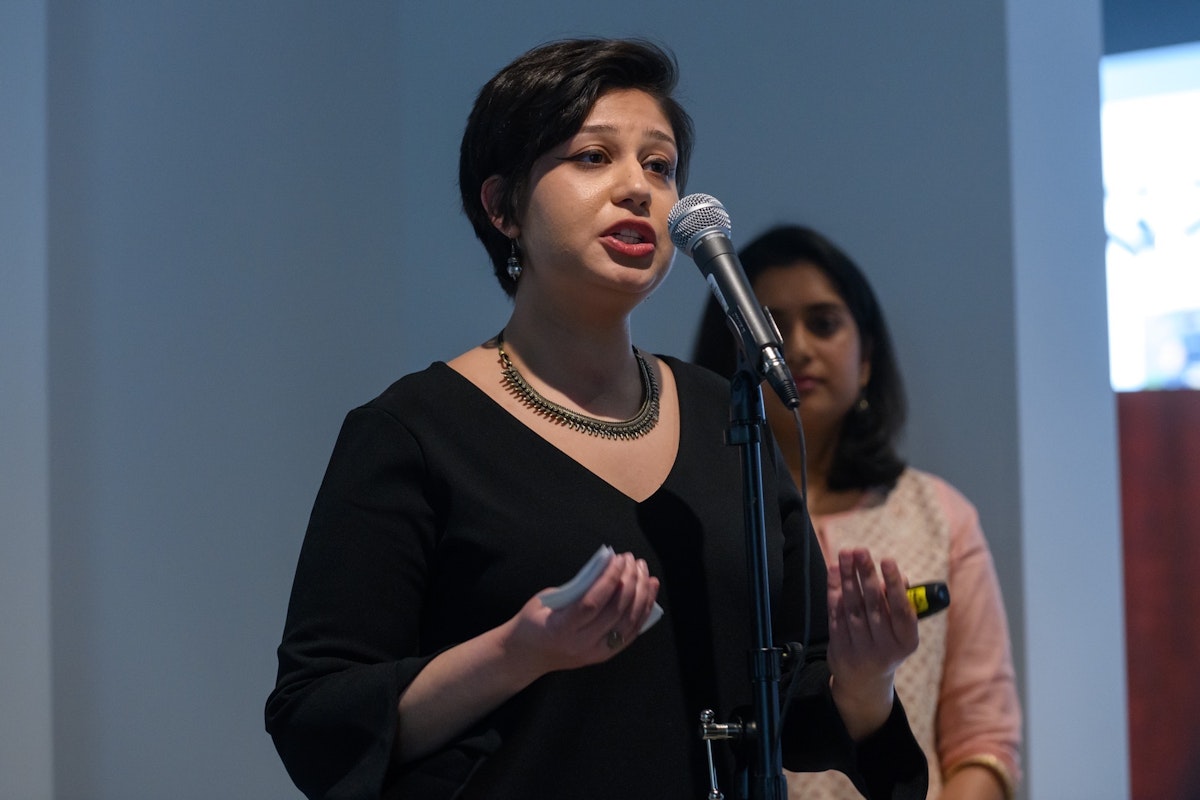
The students also developed a series of workshops centered around stories from their nearly 1,000 hours of primary research, including first-hand observations, workshops, and interviews with patients, caregivers, and health professionals. The workshops are designed for medical professionals to help build awareness around roadblocks to effective communication with caregivers — and create conversation around ways to address these roadblocks.
Additionally, the “Stories for Care” toolbox is meant to help healthcare providers solve problems, build empathy, and generate solutions for patient and caregiver needs. The tools can be adapted to specific participant groups and are divided into three sections: building workshops, doing workshops, and leading workshops.

Throughout the presentation, the group emphasized the power of stories to help build understanding and empathy between stakeholders. To illustrate their point, they shared pre-recorded, dramatic readings — an "interview" with a therapy dog who comforted a wife caring for her husband; a nurse who detailed what happened in the hour and a half between when a patient requested a glass of water, and when he was finally able to deliver it.
Going forward, the students hope to document these stories as more than anecdotes, but also as quantitative data that can be recalled for future work.
Molly C. Dwyer-White, Program Manager for Adult Services for PFCC, praised the results of the pilot in her 32 bed-unit and said the next challenge was to scale it to accommodate hospital 1,000 beds.
Dantuluri noted that she and her classmates grew most as designers by learning the value of forming relationships, having conversations, and actively listening to stakeholders from all sides of the issues being addressed.
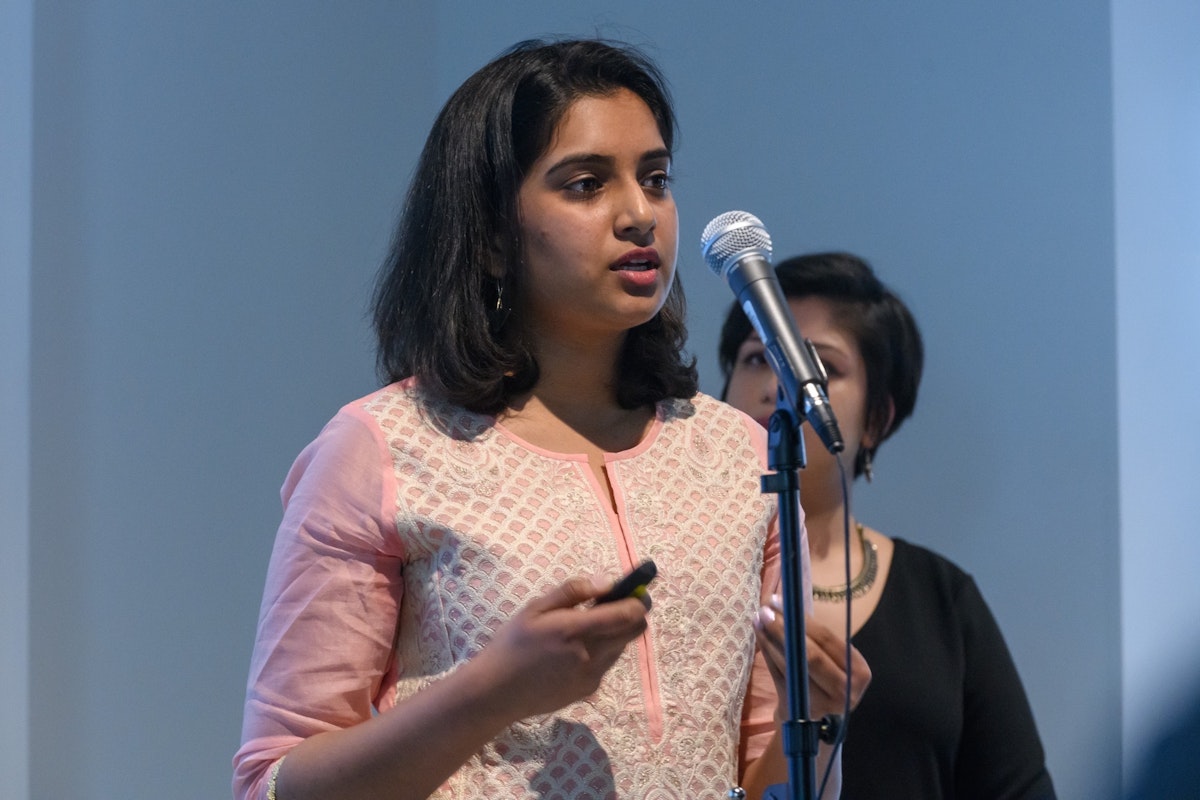
"The kinds of access we have had — not just at the individual level, but at the systemic level — was a huge learning for us," she said.
For the second part of the program, Brandon Keelean (MDes '18) discussed the need for designers to develop and adhere to their own set of ethical guidelines, just like professionals in the fields of law, medicine, and journalism.
Keelean is the co-creator of Canopy, a new web-based platform that, as he explained it, helps people talk about and make end of life healthcare decisions. It's meant to make the process of of "advanced care planning" simpler by breaking it into manageable pieces, similar to a program like TurboTax. Users ultimately produce a signed directive outlining their final wishes and can even add video to further clarify them in their own voice.
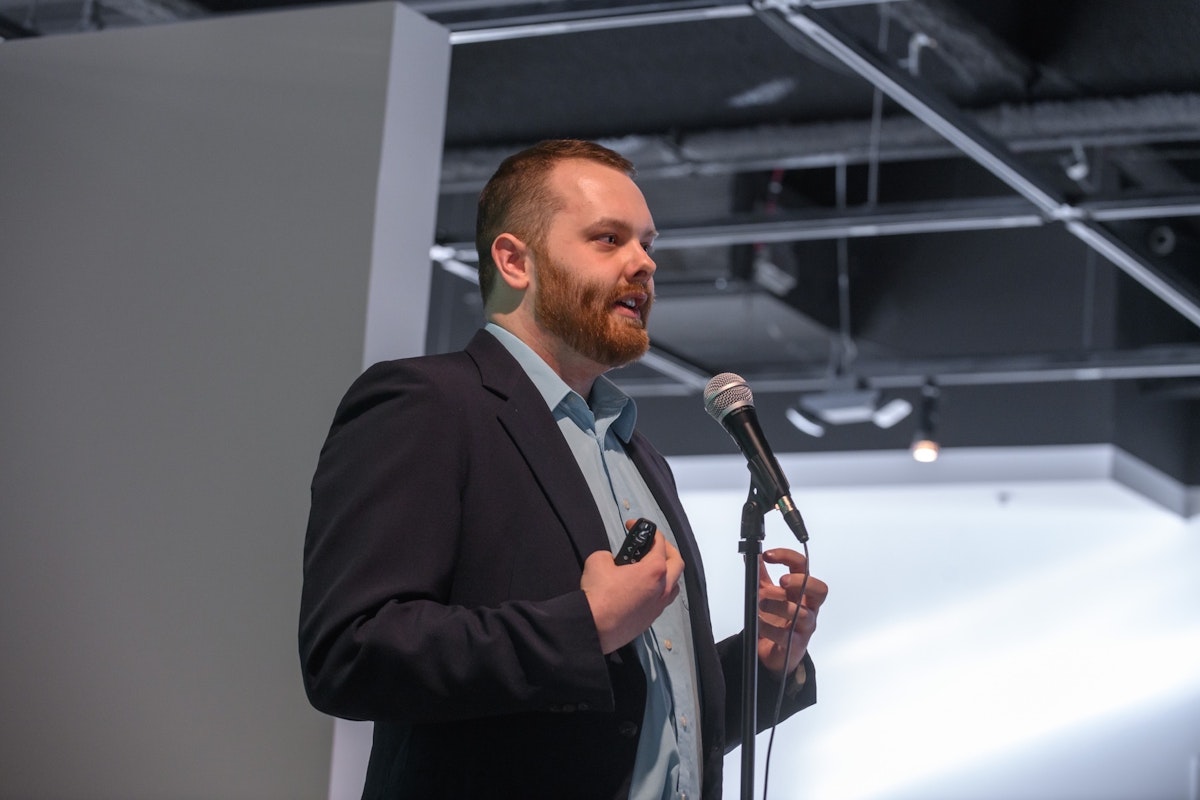
Keelean developed Canopy with two other graduate students from U-M's School of Public Health and School of Information. The app is currently in beta-testing with plans to pilot this summer with a healthcare provider to be determined.
While they're excited about the application's potential to fill a real need — Keelean cited that less than 40% of U.S. adults age 55 and older have an advanced care directive today — they also face many ethical questions daily. Some of them keep Keelean up at night.
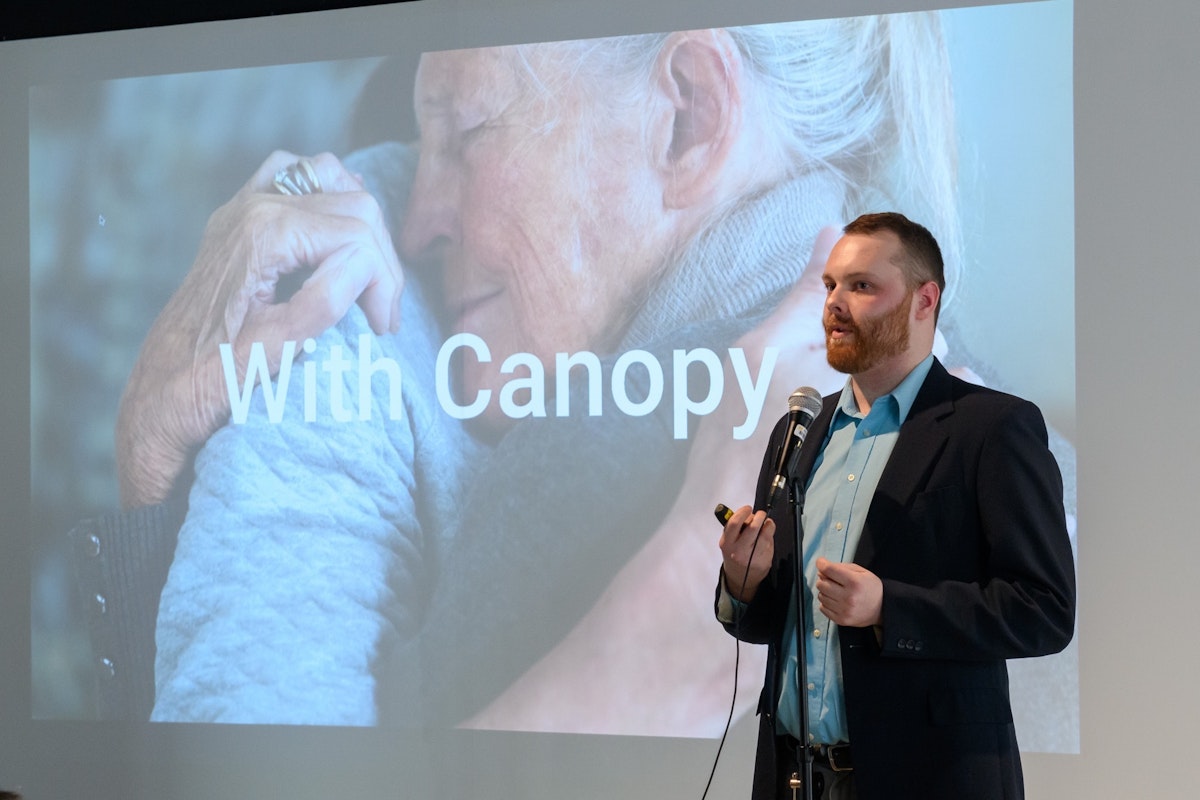
"What if we inadvertently influence a family to make a decision they later regret?" he asked, rhetorically. "How do we balance the power dynamics in healthcare? What is good or bad design in a situation where what you're talking about is literally life and death?"
After reading more than 200 papers on design and ethics, he concluded the field still has a lot room for improvement, especially as its methodologies become more integrated with fields like healthcare, the legislature, and the government's executive branch.
Keelean eventually developed his own list of seven common components among mature disciplines with ethical standards from which design should borrow (values, codes of conduct, governance structures, public discourse, evaluation frameworks, educational tools, and best practices), and applied them to the process model of design.
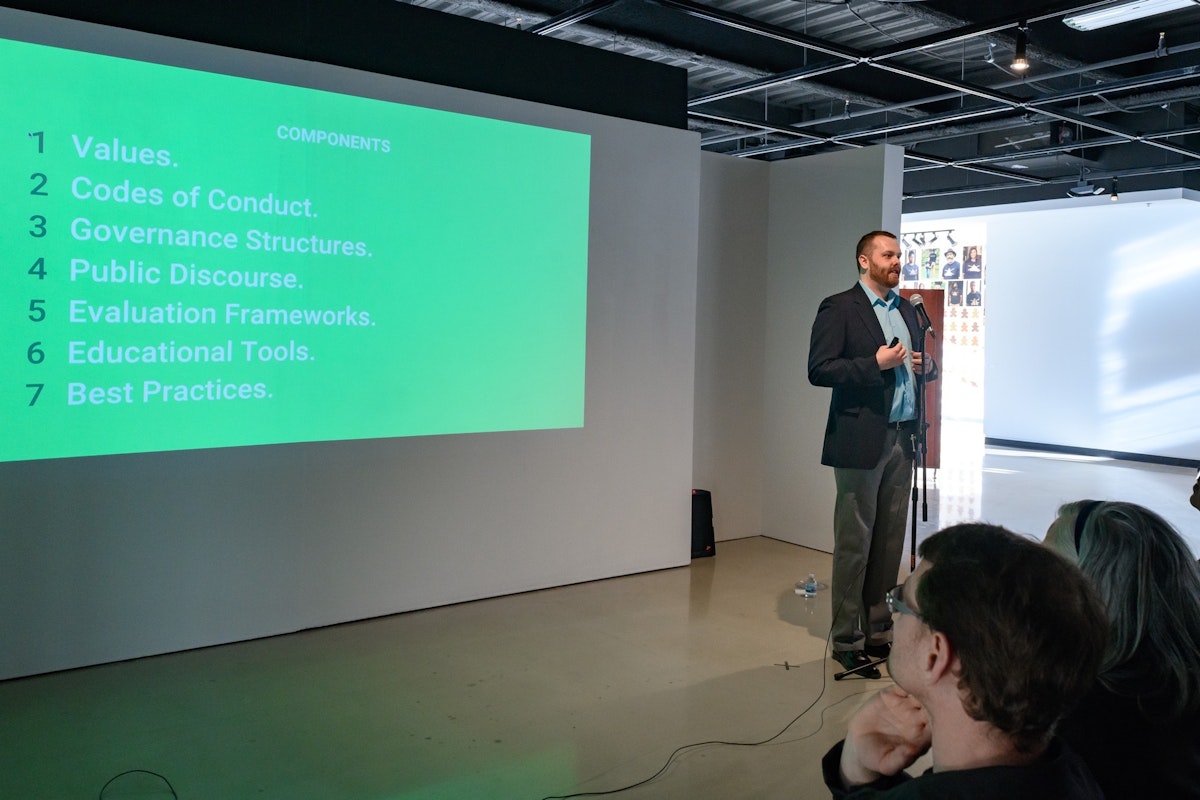
In the end, Keelean acknowledges there's a lot more work to do, but he thinks it's a necessary step in the right direction.
"I hope what we can do is provide a little bit of organization and help make sure we can get there a little faster, so as people design tools to try and help people navigate the complexities of the 21st century,” Keelean said. “We can do that with ethics in mind and think about the greater good and the outcomes of our actions.”
Story by Eric Gallippo, photos by Doug Coombe, and video by Nick Beardslee.